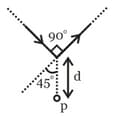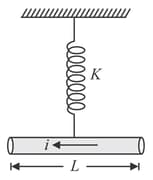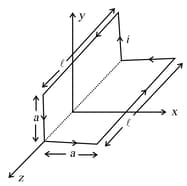Embibe Experts Solutions for Chapter: Magnetic Effects of Current and Magnetism, Exercise 1: Exercise 1
Embibe Experts Physics Solutions for Exercise - Embibe Experts Solutions for Chapter: Magnetic Effects of Current and Magnetism, Exercise 1: Exercise 1
Attempt the practice questions on Chapter 15: Magnetic Effects of Current and Magnetism, Exercise 1: Exercise 1 with hints and solutions to strengthen your understanding. Physics Crash Course JEE Advanced solutions are prepared by Experienced Embibe Experts.
Questions from Embibe Experts Solutions for Chapter: Magnetic Effects of Current and Magnetism, Exercise 1: Exercise 1 with Hints & Solutions
The magnetic field at in the arrangement shown is

A charged particle of mass and charge with energy enters a uniform transverse magnetic field and describes a circular path. The magnitude of the angular momentum of the particle along the circular path is . If the particle had energy , the angular momentum would have been-
A thin wire carrying current is bent to form a closed loop of one turn. The loop is placed in plane with centre at origin. If is the radius of the loop, then
Two proton beams are moving in parallel direction. Which of the following statements are correct (multiple options may be correct)
A current carrying wire of length is suspended horizontally by a spring of force constant as shown. The system is in equilibrium. A magnetic field is switched on into the plane of paper suddenly. Which of the following statements is correct?

A rectangular loop carrying current is shown in the diagram. If the magnetic field in the region is then choose the correct statement(s).

The maximum current in a galvanometer can be . Its resistance is . To convert it into an ammeter of , the resistance should be connected in parallel with galvanometer is . Write the value of .
A galvanometer coil has a resistance and full scale deflection current . A resistance is connected In series with the galvanometer to make a voltmeter. If the least count of the voltmeter is the number of divisions on its scale is
